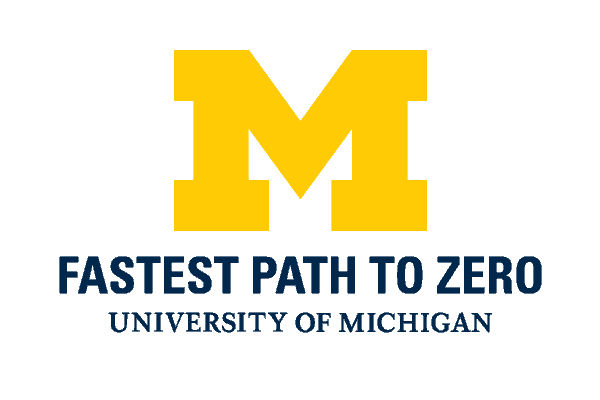Elite international experts to debate SMRs’ role in nuclear co-generation and hybrid systems
Atomic Insights is a media partner for the 5th Annual Small Modular Reactor Summit, scheduled for April 14-15 in Charlotte, NC. Conference value increases when information about the event reaches people who are keenly interested in the topics that will be discussed.
We will be running several pieces that will help Atomic Insights readers decide whether they should make plans to attend.
A unique panel discussion and workshop on integrating small modular reactors (SMRs) into nuclear co-generation and hybrid energy systems has been confirmed for the 5th Annual Small Modular Reactor Summit 2015, to be held April 14-15, in Charlotte NC.
Experts leading the development of the technology from Europe and the US will provide first-hand updates and probe issues through interactive sessions.
The panel has been assembled by David Matthews, Nuclear Energy Consultants and former Director of New Reactor Licensing at the Nuclear Regulatory Commission – who will also serve as workshop moderator – and Phil Hildebrandt, Special Advisor to the Director, Idaho National Lab.
Nuclear co-generation promises to reduce greenhouse gas emissions by capturing the heat and electricity produced by nuclear power generation for use in other industrial and domestic applications.
“This kind of session has never taken place before and represents an absolutely unmissable opportunity for any utility development manager,” said Kerr Jeferies, senior industry analyst, Nuclear Energy Insider.
“The integration of SMRs into hybrid energy systems thinking is sure to be a catalyst for the development of all related technologies,” he added.
The panelists have been named as Shannon Bragg-Sitton, Deputy National Technical Director, Idaho National Lab; Fred Moore, Executive Director – Emeritus, NGNP Alliance Ltd; Kajetan Rozycki, Head of New Reactor Technologies Team, European Nuclear Cogeneration Industrial Initiative (NC2i); and Mike Middleton, Strategy Manager, UK Energy Technologies Institute.
In specially facilitated break-out sessions delegates will be able to evaluate the potential opportunities for SMRs, both LWR and non-LWR designs such as High Temperature Gas Reactors (HTGR), in energy co-generation applications, and explore the economic models available when SMRs are deployed as part of an integrated energy generation system.
Also revealed will be the most recent technological developments in the nuclear co-generation field, plus strategies for identifying new investment propositions.
Phil Hildebrandt of Idaho National Lab will lead the panel discussion with an overview of SMR nuclear energy co-generation opportunities and the concepts of hybrid energy systems.
Shannon Bragg-Sitton, also of Idaho National Lab, will provide perspectives on the use of nuclear energy systems as an integral part of hybrid energy system concepts, including technical, business model and economic considerations.
Mike Middleton, ETI, will present the role of nuclear within the energy mix of a typical scenario through to a 2050 UK low carbon energy system.
Fred Moore, of NGNP Alliance, will provide end-user perspectives and the potential for integration of High Temperature Gas-cooled Reactor (HTGR) technology with a petrochemical facility based on his earlier experience as a senior manager in The Dow Chemical Company.
Kajetan Różycki, of Poland’s National Centre for Nuclear Research, and representing Europe’s Nuclear Co-generation Industrial Initiative (NC2i), will provide a vital European perspective and assess the European business interests in co-generation.
Last year, leaders of the NGNP Industry Alliance Limited NC2i met to discuss collaboration opportunities to develop and commercialize a Generation IV, intrinsically safe HTGR technology that can be used for co-generation.
Both NC2i and the Alliance have missions to enable commercialization of the HTGR technology and expand the use of nuclear energy to industrial applications, and each are setting targets to build and demonstrate HTGR installations in energy-intensive industries over the coming decade.
Lower temperature applications could include seawater desalination or district heating, while higher temperature industrial applications such as chemicals production, oil refining, hydrogen production or advanced steelmaking.
“Getting these two groups together in one room is going to be tremendously exciting,” Jeferies said.So far, confirmed attendees to the Summit include senior executives from PSEG, Fortum, Ameren, Exelon, First Energy, Areva, Generation mPower, Mitsubishi, Bechtel, Mirion, Marsh, Terrestrial, US Department of Energy, IAEA, Chinese National Nuclear Corporation, and more.
Atomic Insights has secured a 10% discount to readers – simply quote ATOMICINSIGHTS when you register online here at: http://bit.ly/1CW6DHf
For more information visit the website at: http://bitly.com/zIFetv


Hey Rod – sorry, this isn’t directly related to this blog post, but just wanting to reach you – It’s breaking in the news that Plant Vogtle in GA is running into schedule delays and cost overruns. Can you look into this and provide some insight, response for those who will surely point to this as claiming once again, “Nuclear is too expensive and constantly runs over budget”?
My guess is that, being that this is the first of a kind being built in the US (though not first of a kind – there are some being built in China that I think are ahead of Vogtle?), that might have something to do with this?
http://arstechnica.com/science/2015/02/further-delays-strike-us-nuclear-plant-construction/
Someone else pointed me to an article Rod posted over on the ANS blog on the topic of Vogtle delays. I hadn’t seen this before.
http://ansnuclearcafe.org/2014/11/12/root-cause-of-vogtle-and-vc-summer-delays/